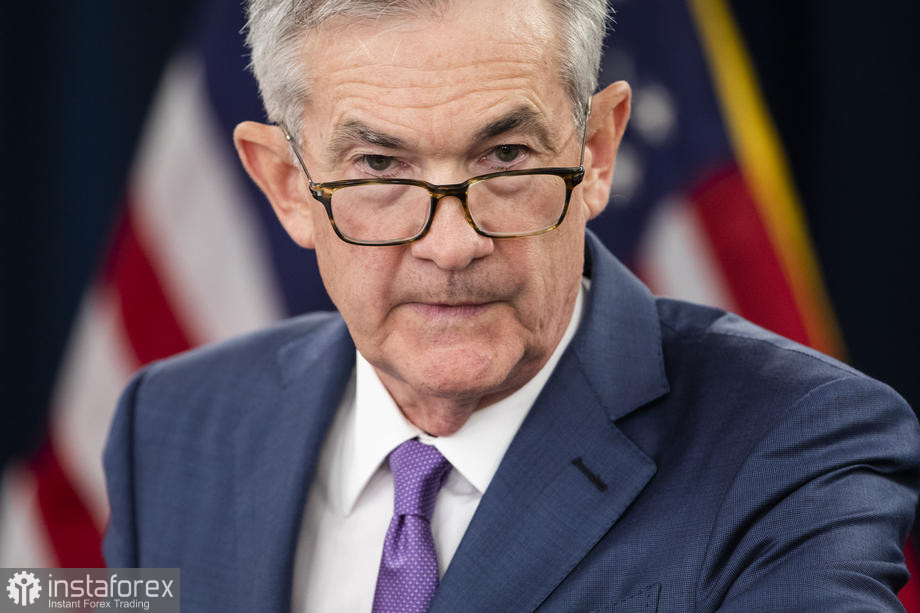The US dollar maintains its winning streak versus risky assets. There are plenty of reasons for the greenback's rally. The main is the Fed's readiness to act more aggressively if necessary. Some Analysts believe that the central bank may hike the key rate by 75 basis points this summer. Today, Fed Chairman Jerome Powell warned that the Fed's fight against inflation may trigger some economic problems. Nevertheless, the regulator is poised to curb soaring inflation.
Powell also said that the Fed cannot guarantee a soft economic landing. It needs to continue to actively raise interest rates to combat inflation, which has already hit a four-decade high. With a tight labor market that pushes up wages, it will be hard to avoid a recession that often follows aggressive policy tightening. "So it will be challenging, it won't be easy. No one here thinks that it will be easy," Powell said. "Nonetheless, we think there are pathways ... for us to get there."

Yesterday, the Senate voted overwhelmingly to give Jerome Powell a second term. Seven months ago, President Joe Biden supported his candidacy for the post of Fed Chairman.
His main priority for the second term is to curb inflation. In April, it hit 8.3% year-on-year, below the surge recorded in March.
Last week, the Fed increased its benchmark rate by half a percentage point after a quarter-point rate hike in March. As I have noted above, traders expect that the central bank will raise the interest rate by another half a percentage point in June and continue to hike rates until the end of the year. Some analysts do not rule out the possibility of a more aggressive rate increase by 0.75% if the CPI index for May rise again. During a press conference last week, Powell made several hawkish remarks, which hinted at a 75 basis point rate increase at the next meeting. The US dollar climbed significantly amid such statements against its counterparts. "So a soft landing is, is really just getting back to 2% inflation while keeping the labor market strong," he pointed out. Not long ago, Powell was widely criticized for a slow response to inflation. Economists reckon that the Fed should have raised rates earlier. They are also puzzled why the regulator maintains the bond-buying program.
Demand for risky assets is quite low amid the Fed's hawkish stance on monetary policy. Technical indicators also confirmed it. After the euro/dollar pair dropped below 1.0360, it tried to erase losses but failed. Expectations of the ECB's shift to a more aggressive policy are also bearish for the euro. Christine Lagarde said that the regulator may hike key rates in July this year. In the short term, it is better to open positions with the support level of 1.0370 in focus. Bulls may take control again if they protect this level. If not, bears are likely to push the pair to new yearly lows of 1.0340 and 1.0290. The euro may also start a correction. However, the pair should consolidate above 1.0420. Only after that, a breakout of 1.0460 may take place. In this case, the pair may rise to 1.0520 and 1.0580.
GBP bulls have recently defended 1.2170. Yet, the situation may change quite soon. The Bank of England hinted that it may take a pause in its monetary policy tightening cycle. If so, traders should brace for another major sell-off of the pound sterling. In the short term, buyers will probably try to push the price to 1.2240. Only consolidation above this level will trigger an upward correction. However, I advise selling the pound sterling after each rebound within the trend. A breakout of 1.2240 will push the pair to 1.2280 and 1.2330. A breakout of 1.2170 will strengthen the bear market, opening the way to new lows of 1.1220 and 1.2070. The nearest support level will be 1.2030. The pound sterling is likely to drop to this level if the UK economy contracts even more.
 English
English 
 Русский
Русский Bahasa Indonesia
Bahasa Indonesia Bahasa Malay
Bahasa Malay ไทย
ไทย Español
Español Deutsch
Deutsch Български
Български Français
Français Tiếng Việt
Tiếng Việt 中文
中文 বাংলা
বাংলা हिन्दी
हिन्दी Čeština
Čeština Українська
Українська Română
Română

